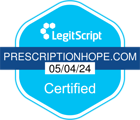Understanding Your Prescription Insurance Coverage
Posted by Mathew Hickey - See Editorial Guidelines (Last Updated On: Tue Feb 13 2024)

Prescription insurance is an important part of any healthcare plan. It significantly reduces the cost of prescribed medications, making it a crucial component of overall healthcare management. Lack of prescription coverage understanding can cause confusion, health risks, and higher out-of-pocket costs for many people. This article aims to provide a comprehensive understanding of prescription insurance coverage and why it is essential.
Understanding the Basics of Prescription Insurance Coverage
Prescription insurance is vital, providing financial protection against high medication prices in healthcare plans. Your health insurance plan may include it, whether obtained from your employer, purchased individually, or acquired through government programs like Medicaid or Medicare. The way prescription insurance works is that instead of shelling out the full cost for a prescribed medication, you are usually responsible for a copay, coinsurance, or a deductible, which are generally lower amounts. The specifics of your coverage, however, are contingent on the details of your particular plan and the nature of the medications prescribed to you. This encompasses aspects such as covering the type of drugs, the conditions for coverage, and determining your out-of-pocket contribution. It’s essential to familiarize yourself with these specifics to make the most of your prescription insurance and avoid unnecessary expenses.
The Role of Formularies in Prescription Insurance Coverage
A formulary is essentially a list of medications that are covered under your insurance policy. The list categorizes drugs into tiers, each representing a different category with associated cost levels. Generally, the lower tiers consist of generic drugs, which are typically less expensive. Brand-name drugs, which are costlier, fall in the middle tiers. The highest tiers often contain specialty drugs, which are usually the most expensive. Having a firm grasp on your formulary and knowing the tier in which your medications are classified can assist you in anticipating your potential out-of-pocket expenses. Remember, the tier of your medication influences the portion of the drug’s cost you will be responsible for. Hence, understanding your formulary is a key step towards making informed decisions about your healthcare expenses and taking full advantage of your prescription insurance coverage.

Importance of Prescription Deductibles and Copays
Your prescription deductible is the monetary amount you need to cover out-of-pocket before your insurance kicks in and starts shouldering some of your medication costs. Once you’ve satisfied your deductible, you may still be responsible for copays or coinsurance. A copay is a set sum you pay for each medication regardless of its total cost, while coinsurance represents a percentage of the total cost of the medication. Understanding these terms and their impact on your potential costs is essential. You need to know the specific deductible, copay, and coinsurance requirements attached to your prescription insurance plan. This knowledge enables you to effectively plan for and manage your healthcare expenses. Whether you are dealing with ongoing prescriptions for chronic conditions or occasional medications for acute illnesses, being aware of your financial responsibilities can help you avoid surprise costs and maintain a consistent healthcare budget. So, it is worth the effort to acquaint yourself with these aspects of your prescription insurance coverage.
Navigating Prior Authorization and Step Therapy
Prior authorization and step therapy are two critical aspects of prescription insurance coverage. With prior authorization, your healthcare provider must obtain approval from your insurance provider before covering a specific medication. This process ensures your prescribed drug is medically necessary and is part of your insurance company’s approved list. Alternatively, in step therapy, you must try more cost-efficient alternatives before progressing to more expensive medications. Healthcare providers often use this approach to manage chronic conditions with multiple available treatment options. Insurance companies use both prior authorization and step therapy as mechanisms to control costs. However, they can sometimes cause delays in receiving your medication or increase your out-of-pocket expenses if not fully understood. Therefore, it’s critical to be familiar with your insurance company’s prior authorization and step therapy protocols. If these requirements apply to your prescribed medication, it’s advisable to have a detailed discussion with your healthcare provider to devise a strategy that ensures your treatment is not disrupted and costs are managed effectively.

Importance of Regularly Reviewing Your Insurance Coverage
Consistent monitoring of your prescription insurance plan is vital, as changes can occur on an annual basis. These modifications can impact what medications are covered, and to what extent, which can directly affect your out-of-pocket expenses. Changes may be due to updates in your insurance company’s formulary, adjustments to coverage tiers, or revisions in the copay, coinsurance, and deductible structure. The best way to stay abreast of these potential changes is by thoroughly reviewing your plan each year. This practice not only helps to prepare for any possible cost adjustments but also ensures that your prescription insurance plan is still the most beneficial for your specific healthcare requirements. Understanding these changes can assist you in making informed decisions about switching to another plan during open enrollment periods, if necessary. Always remember that being proactive in reviewing your prescription insurance coverage can potentially lead to significant savings, better medication access, and an overall smoother healthcare experience.
The Benefit of Discussing Prescription Costs with Your Doctor
Having an open dialogue with your healthcare provider about your prescription insurance coverage and the associated costs can lead to more economical treatment choices. A common misconception is that physicians are fully aware of the specific costs linked to various medications. This is not always the case, and by engaging in conversations about your insurance details and any potential financial constraints, your doctor can take these elements into account when prescribing medications. This level of communication could potentially result in notable cost savings.
It’s important to remember that your healthcare provider is a crucial ally in navigating your prescription insurance. They can provide invaluable guidance and support in understanding your coverage, managing out-of-pocket costs, and seeking alternative treatments when necessary. They can also assist with processes like prior authorization and step therapy, which your insurance company may require.
Adequate preparation for these discussions can also be beneficial. Before meeting with your healthcare provider, review your insurance coverage, make a note of your deductibles and copays, understand your formulary, and be aware of any potential changes in your coverage. This will equip you to have a more productive conversation with your doctor, ultimately leading to more personalized and cost-effective treatment strategies.
Prescription Hope Can Help with High-Cost Prescriptions
Navigating the world of prescription insurance can be complex, especially when you’re facing high-cost medications that your plan doesn’t cover. That’s where Prescription Hope can come in. Prescription Hope is a service that works directly with pharmaceutical manufacturers to provide over 1,500 FDA-approved medications at a set price of $60.00 per month per medication. This includes all top-100 prescribed medications in the United States. By assisting with enrollment in patient assistance programs, Prescription Hope can offer an affordable solution when insurance falls short. They can help manage, order, track, and refill your medications, reducing the stress of high-cost prescriptions. This service can be a beneficial tool in ensuring that you have access to necessary medications, regardless of insurance gaps. As always, it’s crucial to discuss all options with your healthcare provider to ensure that you’re making informed decisions about your health. While insurance is an essential part of managing healthcare costs, services like Prescription Hope can provide additional support in managing high-cost prescriptions. Remember, you have options, and knowledge is power when it comes to managing your healthcare expenses.


